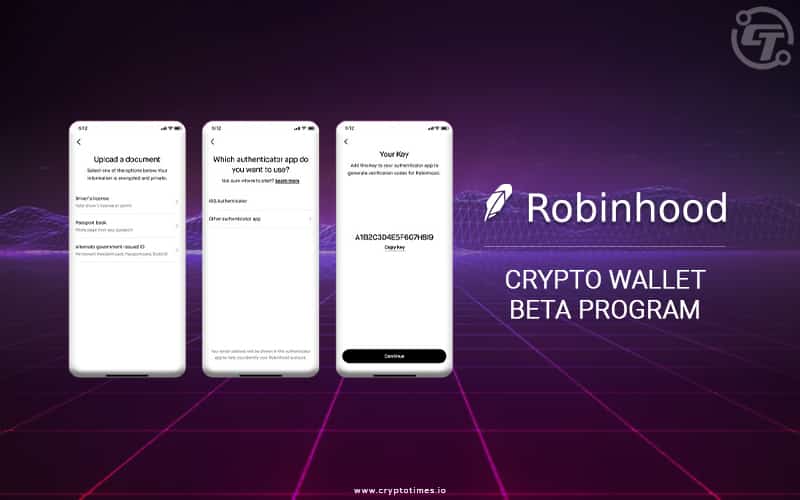In Brief:
- Robinhood finally began its crypto Wallets Beta program enabling users to withdraw crypto from their wallets.
- The program aims to connect Robinhood cryptocurrency users to the larger blockchain ecosystem.
- The program has started with the first 1,000 customers on the waitlist receiving crypto wallets.
Robinhood, a leading crypto and stock trading app, launched its much awaited Wallet program. In the blog post today, Robinhood launched a Beta program enabling users to withdraw crypto from their wallets.
The program will begin with rolling out crypto Wallets to the first 1,000 customers from the top of the Wallets waitlist. By March, Robinhood will scale up to 10,000 users before extending to the rest of the WenWallets waitlist.
The program aims to connect Robinhood crypto holders to the broader blockchain ecosystem for the very first time. Until now, traders were only able to purchase and sell cryptocurrencies like Bitcoin and Dogecoin via the app. Robinhood essentially held the cryptocurrency on their behalf, giving users exposure to price movements but not to a decentralized blockchain.
With this new Beta feature, the wallets will enable Robinhood users to send and receive their crypto from Robinhood to external crypto wallets. For instance, Wallet holders can now buy Ethereum on Robinhood and transfer it to another wallet so they can swap assets on decentralized exchanges on several DeFi applications.
Moreover, The trading app also intends to add the ability for users to calculate the dollar amount of crypto to trade in terms of dollar amounts. Beta testers will have a daily limit of $2999 in total withdrawals and 10 transactions and will need to enable two-factor authentication
The Beta functionality, as per the company, is the second major milestone in Wallets rollout. In September last year, Robinhood started working on the testing crypto wallet and transfer features in the Beta version for the app.
In this program, the company also plans on finalizing the send and receive flow, improving the transaction history interface and QR scanning experiences, and adding block explorer support to provide more insights into their on-chain transactions.






